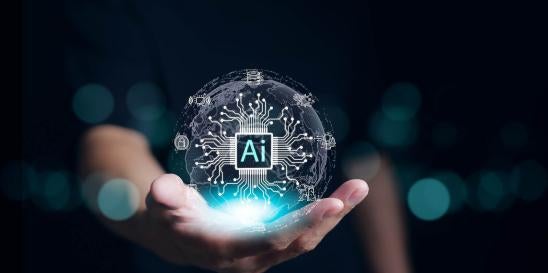The emergence of artificial intelligence (AI) as a field of technology has correlated with an increase in patent application filings on AI-related inventions over the past two decades. With more filings than ever, businesses and institutions developing AI-based technology are claiming rights over key innovations in this space. Below we examine the implications of this trend and how it may affect decision-making for businesses and institutions.
What is Artificial Intelligence?
Accurately defining AI is imperative because it enables the determination of whether subject matter described in a patent application is within or outside the ambit of AI. In other words, an accurate and comprehensive definition of AI allows for better identification and classification of AI-related concepts. As computing power, software technologies, and hardware capabilities have all improved, AI-based technologies have been more widely adopted, and more categories of technologies have been characterized as AI. According to one McKinsey and Company report, adoption of AI based technology has more than doubled from 2017 to 2022. In the report, surveyed respondents stated that various types of AI capabilities were embedded in at least one function or business unit of their respective companies.
Due to such ubiquitous adoption, crafting a comprehensive and universal definition of AI presents a challenge. In 1955, Stanford Professor John McCarthy defined artificial intelligence as “the science and engineering of making intelligent machines.” Since that time, the use cases and definitions of AI have changed significantly, moving away from a focus on the making of machines to enabling machines to learn on their own by, e.g., analyzing data.
To illustrate the challenge of defining AI, we present a list of definitions from the websites of various large technology companies and governmental organizations.
|
Organization
|
Definition
|
|
|
Citing the National Artificial Intelligence Initiative Act of 2020, the U.S. State Department defines AI as “a machine-based system that can, for a given set of human-defined objects, make predictions, recommendations or decisions influencing real or virtual environments.”
|
|
Organization of Economic Cooperation and Development (OECD)
|
“An AI system is a machine-based system that is capable of influencing the environment by producing an output (predictions, recommendations or decisions) for a given set of objectives. It uses machine and/or human-based data and inputs to (i) perceive real and/or virtual environments; (ii) abstract these perceptions into models through analysis in an automated manner (e.g., with machine learning), or manually; and (iii) use model inference to formulate options for outcomes.”
|
|
World Intellectual Property Organization (WIPO)
|
“AI is generally considered to be a discipline of computer science that is aimed at developing machines and systems that can carry out tasks considered to require human intelligence.”
|
|
|
“At its simplest form, artificial intelligence is a field, which combines computer science and robust datasets, to enable problem-solving.”
|
|
|
“AI is comprised of a collection of algorithms, which are executable mathematical functions that process data through a series of rules and step by step instructions.”
|
|
|
“Artificial Intelligence is the ability of a computer system to deal with ambiguity, by making predictions using previously gathered data, and learning from errors in those predictions in order to generate newer, more accurate predictions about how to behave in the future.” |
Even a cursory review of the above definitions indicates a lack of consensus. In short, the definition of AI is dynamic and context specific, and will remain so for the foreseeable future.
Accordingly, any data that quantifies the number of patent applications filed on AI-related technologies makes assumptions about what technologies are considered to be AI. This is true of the data below, in which certain patent applications were identified as covering AI-related technologies. Other analyses might count the number of patent applications differently depending on what is or is not categorized under the umbrella of AI.
Trends in AI-Based Patent Application Filings in the United States and Europe
Patent application filings involving AI-based subject matter have, over the past 20 years, increased significantly in both the United States and Europe. As evidenced by data made available by the U.S. Patent and Trademark Office (USPTO) (page 7 of the USPTO Presentation), there was a linear increase in AI-based patent application publications (and by extension, in patent application filings) in the United States from 1980 to 2000. Further, the increase in patent application filings was nearly exponential from 2000 to 2020. Similarly, as described in a report by Marks & Clerks (page 4 of report), which relied upon and cited European Patent Index data from 2020, AI-based patent application filings in Europe increased significantly from 2000 to 2019. However, in contrast to the United States, filings in Europe increased exponentially only for a relatively brief period, namely from 2015 to 2019. In the years prior, growth was negligible. In fact, in 2006, 2007, and 2009, annual filings actually declined as compared to the immediately preceding year.
While U.S. and European patent application filing data indicate significant growth in AI-based patent applications, the magnitude of growth in the United States far outpaced that of Europe. This growth contrast is best exhibited by the fact that in the years from 2015 to 2019 – a time frame in which AI-based patent application filings in Europe experienced the highest growth – annual filings in Europe increased from approximately 2000 to 7700 (page 4 of Marks & Clerks Report). In the same period, however, annual filings in the United States increased by a staggering amount of approximately 18,000 applications (page 7 of USPTO Presentation).
As expected, most of the subcategories of AI experienced growth. In the US, AI based patent applications classified under the subcategory of planning and/or control knowledge processing experienced the highest growth from 1990 to 2020 (page 8 of USPTO Presentation). In contrast, in Europe, the computer vision subcategory experienced the highest growth from 2000 to 2021 – an increase in annual filings from approximately 10 to around 2000 (page 14 of Marks and Clerks Report). In Europe, the computer vision subcategory was by far the leading category, outpacing its nearest competitor subcategory (Natural Language Processing) by a factor of almost 2.5x by 2021 (Id.). In the United States, however, planning and/or control knowledge processing was by far the leading subcategory in patent filings, experiencing a staggering 13x growth in patent filings from 4000 annual filings in the year 2000 to 52,000 filings in 2020, outpacing its nearest competitor subcategory (Vision and AI Hardware) by a significant margin (page 8 of USPTO Presentation).
Notably, the planning and scheduling subcategory in Europe, which may be analogous to the planning and/or control knowledge processing subcategory in the United States, saw a very modest growth in annual filings - from approximately 200 in the year 2000 to around 700 in the year 2021 (page 14 of Marks and Clerks Report).
Allowance Rate Trends in the United States and Europe
The overall allowance rates for AI-based applications in both the United States and Europe were similar, with some notable differences. In the United States, there was a sudden decline from approximately 74% to 66% from 2013 to 2015, based on data provided by the U.S. Patent and Trademark Office (page 15 of USPTO Presentation). In the same time frame, the allowance rate in Europe remained largely consistent at approximately 45% (page 9 of Marks and Clerks Report). It is noted that the sudden allowance rate decline in the United States coincided with the publishing of the landmark Supreme Court case of Alice Corp. v. CLS Bank International in 2014. Changes in the interpretation of patent eligibility of software-based patent applications, which stemmed from the Supreme Court’s reasoning in Alice, may have contributed to the decline.
Concluding Thoughts
While various subcategories within AI have experienced different levels of growth in patent filings, it is evident that AI-based patent filings, overall, have skyrocketed in the past twenty years, both in Europe and the United States. Moreover, data suggests that this growth will continue for the foreseeable future.
Given these trends, businesses and institutions should consider (1) determining whether concepts underlying their core products and services utilize aspects of AI, (2) identifying the categories within which these concepts may be classified, and (3) considering drafting patent applications with a particular focus on these concepts, all the while keeping an eye on the growth trends of various subcategories within AI that are pertinent to their companies and their respective industries.
AI is far more than a buzzword. Companies across a broad range of industries are adopting AI technologies and incorporating AI-based patent applications into their intellectual property (IP) portfolios. Entities that ignore this AI trend may risk (1) losing their competitive edge, (2) failing to capitalize on profitable licensing opportunities, and (3) exposing themselves to patent infringement suits.





 />i
/>i

